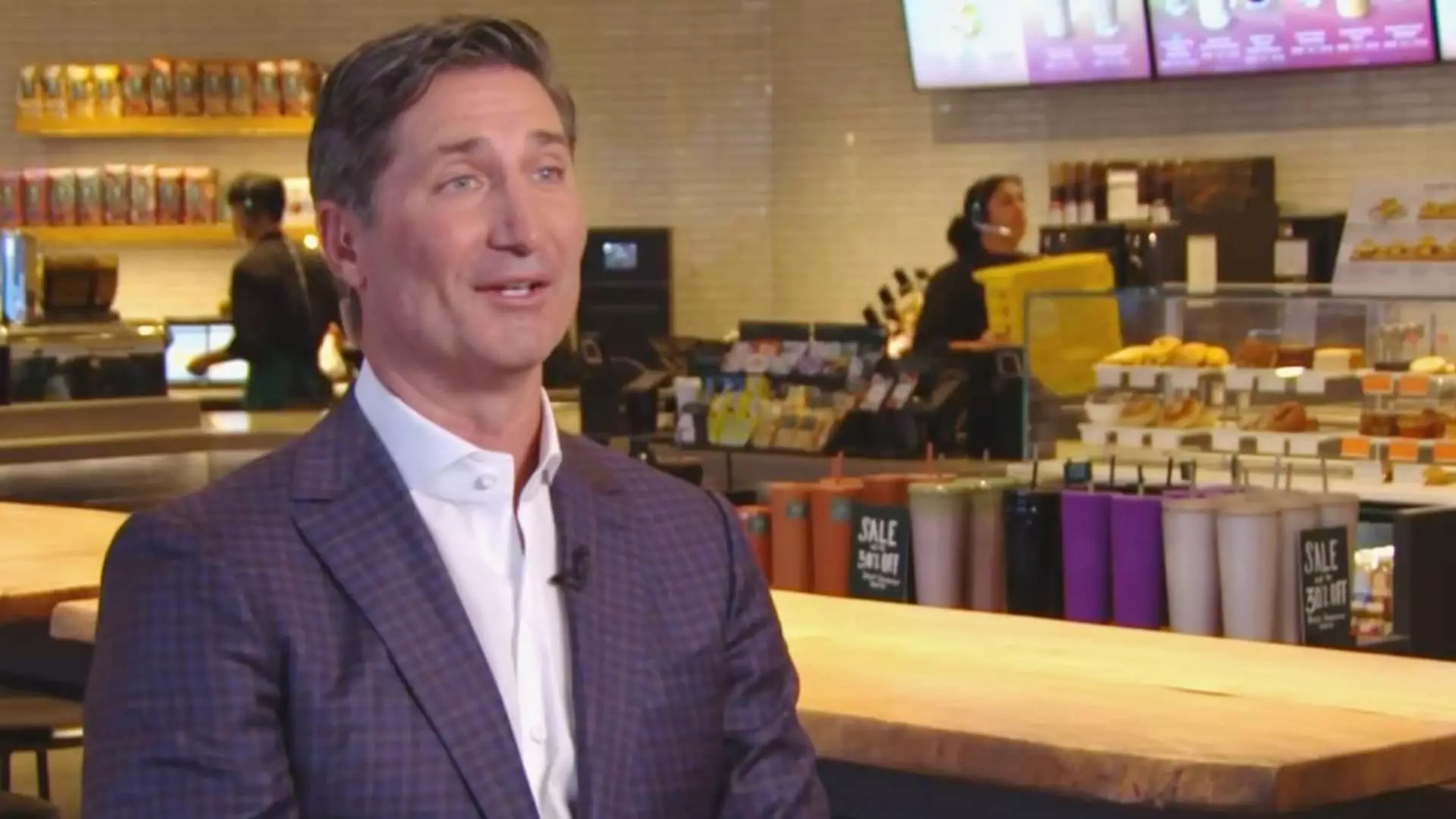Starbucks, the global coffee giant, has witnessed a concerning trend of declining sales over the past three quarters. Under the leadership of CEO Brian Niccol, the company is strategizing to not only halt this downward spiral but to revitalize its market presence. During a recent conference call, Niccol elaborated on the company’s vision for regaining its competitive edge, implementing a series of well-thought-out adjustments aimed at enhancing the customer experience and operational efficiency.
The consistent drop in revenue has prompted Starbucks to reassess and refine its core operations. One of the critical issues identified is the overwhelming number of mobile orders—currently accounting for over 30% of transactions—which has led to congested counters and frustrated customers. Niccol’s vision is to create a more streamlined experience for both in-store visitors and mobile order users. This includes improving app accuracy for order timing and reducing the complexity of drink customizations to enhance both speed and consistency.
In a bid to improve service speed and product quality, Starbucks plans to revamp its menu by focusing on “fewer, better” offerings. Niccol pointed out that a bloated menu can hinder barista efficiency, leading to inconsistencies in drink preparation. By streamlining offerings, Starbucks aims to not only speed up service but also heighten the quality of each product. This strategic reduction could potentially alleviate dissatisfaction among customers who have experienced delays or errors with their orders. Niccol hopes that while some patrons may initially mourn the loss of certain items, they will ultimately appreciate the gains in both speed and reliability.
Starbucks has long been celebrated as a “third place”—an inviting space for individuals to gather, work, or relax outside of home and office. Recent years, however, have seen a dilution of this identity. Niccol is committed to rejuvenating the ambiance and customer experience within Starbucks locations. Plans include reinstating ceramic mugs for customers wishing to enjoy their beverages on-site and a notable return to the use of Sharpies for personalization instead of printed labels. Beyond these specific initiatives, there will be an overall reassessment of store designs to ensure they embody the warmth and comfort that the brand is known for.
The pandemic prompted operational shifts, including the removal of condiment bars which served to deter customers from lingering. Niccol plans to reinstate these condiment stations to improve convenience for customers while allowing baristas to focus on their primary tasks. While efficiency is crucial, the customer experience must not be sacrificed; thus, restoring these small touches can promote a sense of community and familiarity.
A crucial element in Starbucks’ turnaround strategy involves addressing staffing concerns. Niccol has recognized the need for more consistent scheduling, which has translated into lower turnover rates among baristas. Ensuring sufficient staff levels during busy hours, as well as “shoulder hours,” is vital to maintaining service quality. By fostering an environment where employees feel secure and valued, Starbucks can improve both morale and customer satisfaction.
Recognizing the necessity for a marketing refresh, Niccol aims to broaden Starbucks’ outreach beyond its loyal Rewards members. He emphasizes the importance of highlighting product quality while reducing the emphasis on discount-driven promotions that can overwhelm baristas and diminish brand value. The hiring of Tressie Lieberman as the new chief global brand officer underscores the company’s intention to leverage marketing expertise to reshape its image and engagement strategies.
In response to rising consumer pushback against high prices, Starbucks has decided to implement a suspension of price increases across North America for the next fiscal year. This move is designed to improve customer perception of pricing fairness. Additionally, the removal of charges for milk substitutes marks a significant step toward creating a more inclusive pricing structure. This decision alone could lead to cost savings for many regulars, fostering goodwill and enhancing customer loyalty.
Starbucks finds itself at a pivotal moment, tasked with reigniting its brand identity and restoring customer satisfaction. Through thoughtful alterations to its operational model, menu offerings, and marketing strategies, the company is positioning itself for a stronger rebound. The road ahead may have its challenges, but with a clear focus on enhancing the customer experience, Starbucks could very well reclaim its status as a beloved coffeehouse staple.

